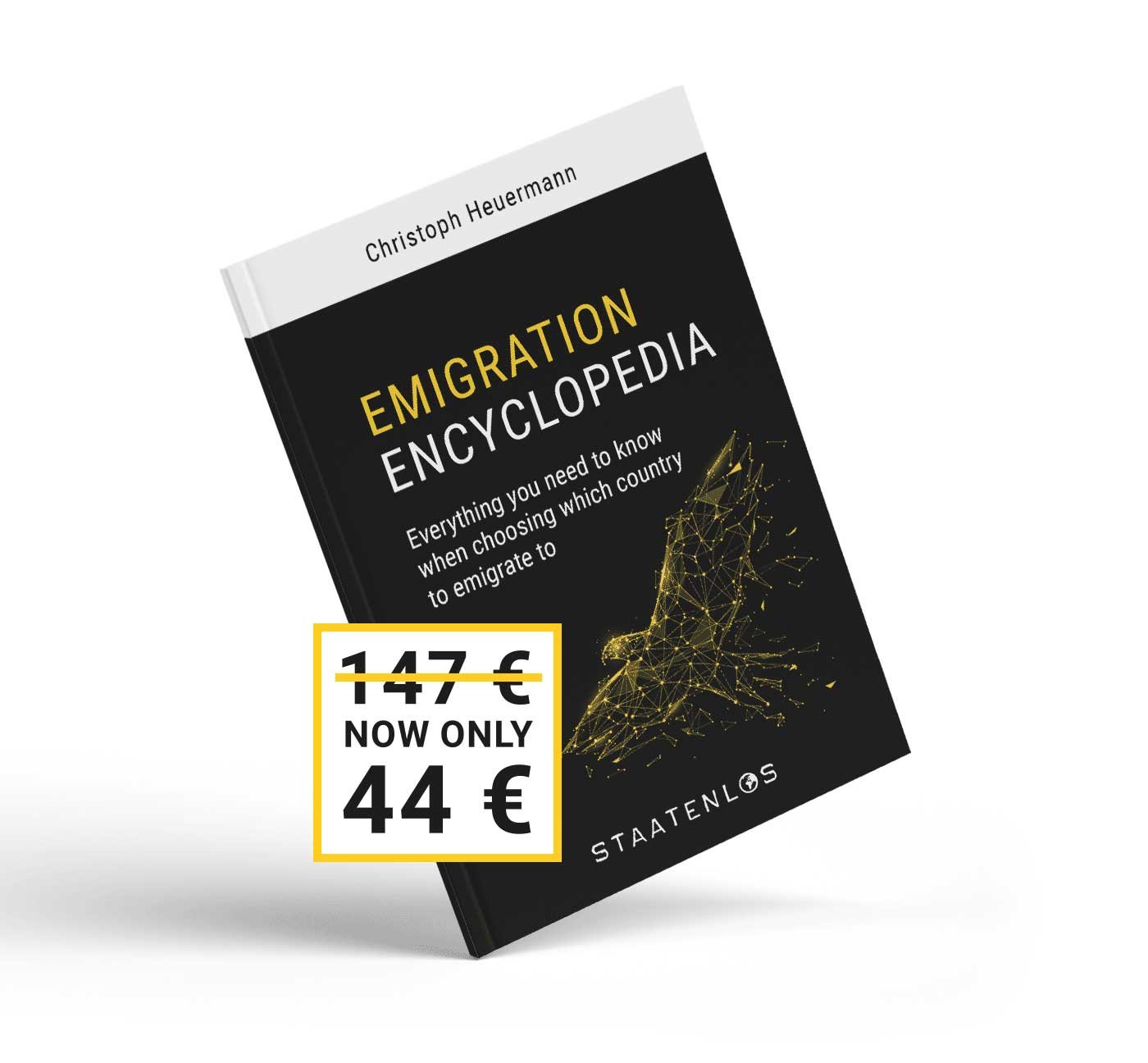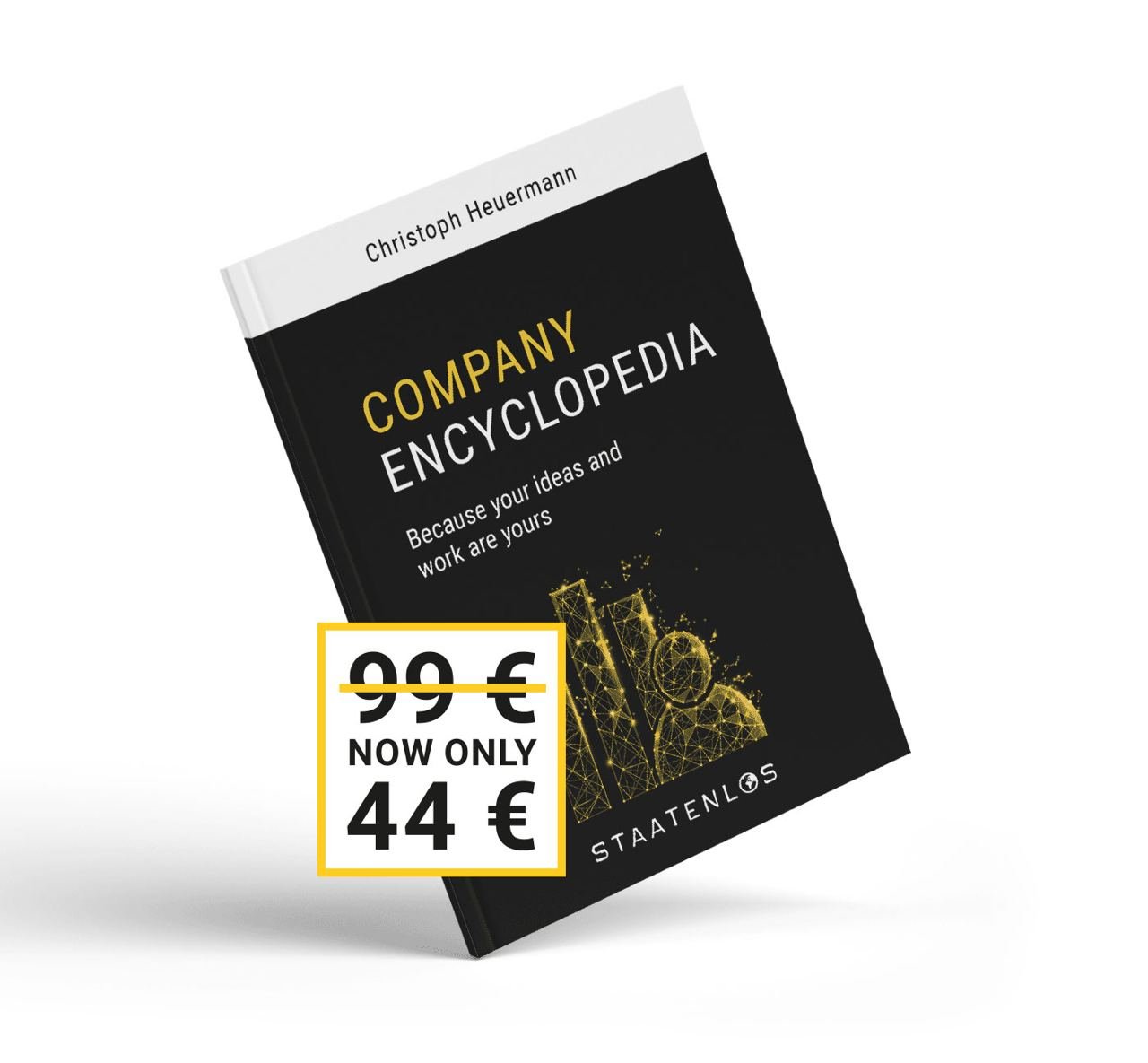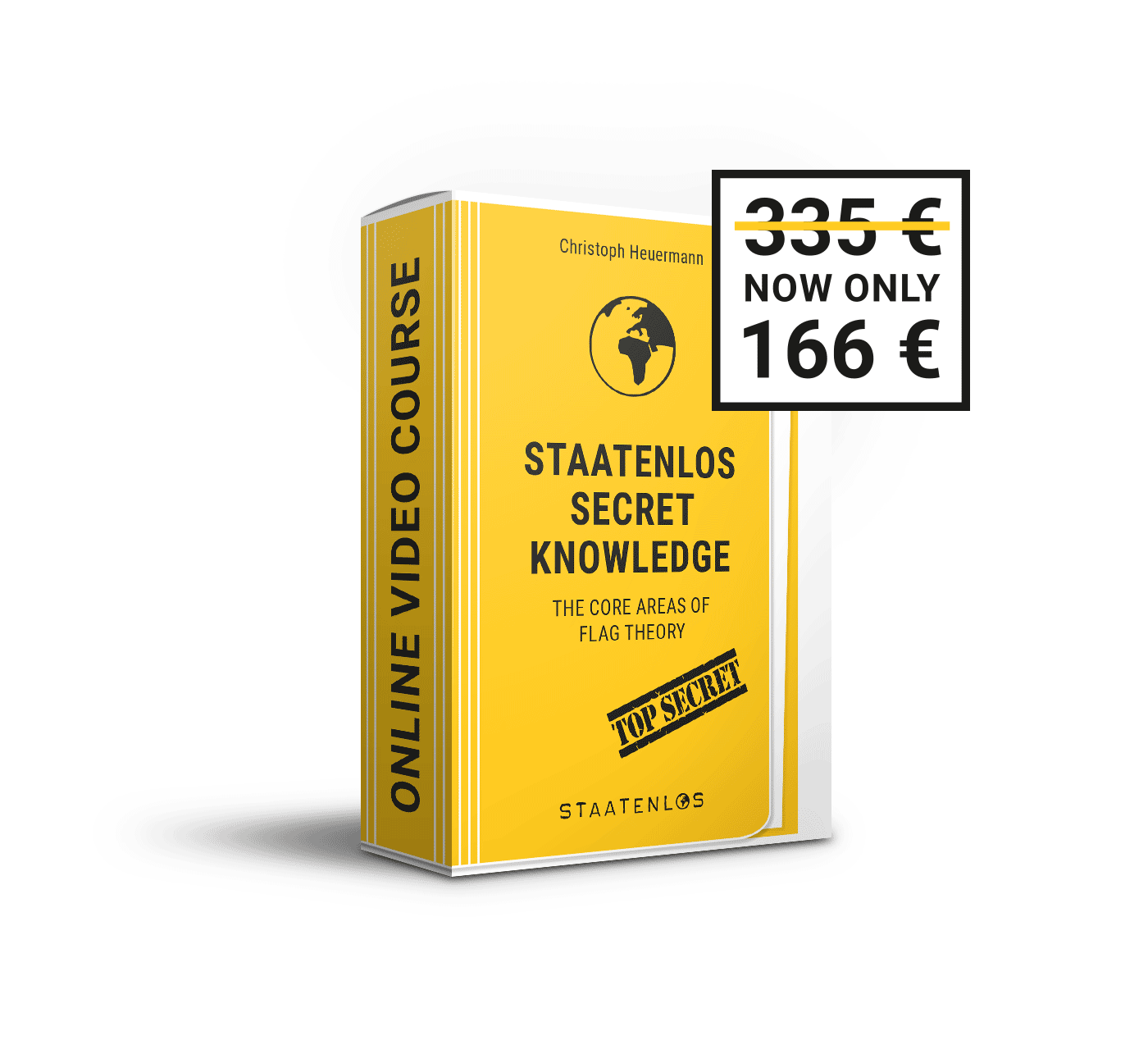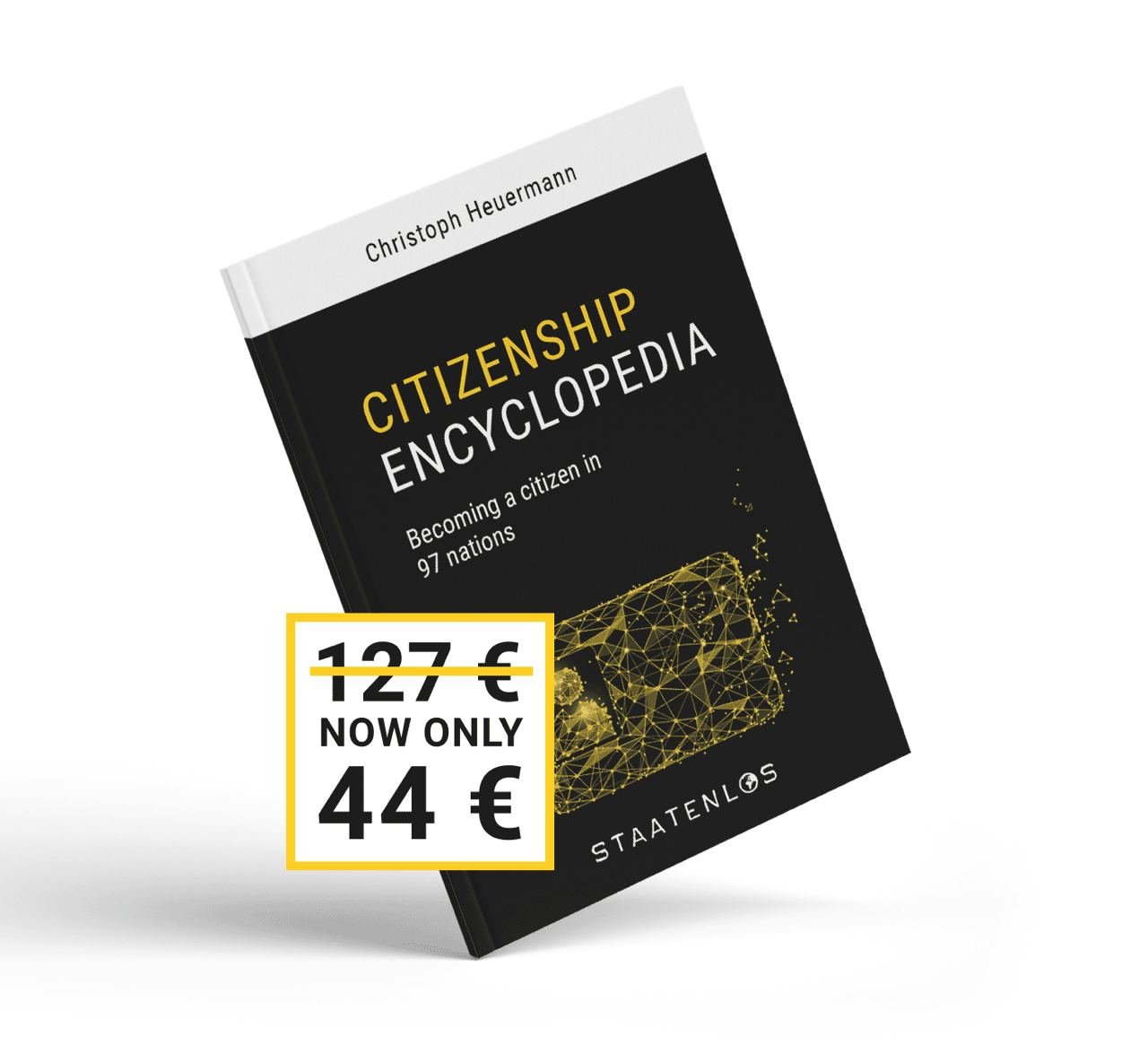In today’s article, we will take a more in-depth look at the qualities of Estonia as a location for a company so that you can decide whether it makes sense for you to set the company up there or not.
The e-residency programme in Estonia and the incorporation of companies there are still being discussed by digital nomads. After all, this small Baltic country has come a long way since it regained its independence from the Soviet Union 30 years ago.
Today, many consider this country to be the undisputed leader of digitalisation in Europe. We are not only talking about companies: government and governance are also digital. Estonia is known for its electronic residence card (e-Residency), a kind of ID card that allows anyone to start and manage a business in Estonia remotely. We have already written about setting up businesses in Estonia in another article on our blog.
Many self-employed and start-up entrepreneurs set up in Estonia without having thoroughly studied the advantages and disadvantages of their jurisdiction. They often fall into rather nasty tax traps, hidden in the Estonian tax regime, and which are ready to attack innocent entrepreneurs.
On the other hand, in some respects, Estonia probably offers the best option today if you need a European company. Now, for which business models does it make sense to set up a company in Estonia? We will try to clarify this in this article.
Basics of the Estonian OÜ
First, let us start with the basics: the Estonian capital company, OÜ (Osaühing in Estonian), has a structure similar to that of the LLC in the English-speaking world. The share capital contribution is €2,500, but it does not have to be paid in full. However, up to that amount, the shareholders are liable for their private assets.
Estonian OÜs can have any number of shareholders and directors, and the administration of the company is particularly easy thanks to the electronic residence card, which allows everything to be done remotely, via the internet.
In principle, it is also possible to incorporate the company in person, before local notaries in Estonia, but we do not see any reason to do so.
Important: despite what people often mistakenly assume, Estonian digital residency does not imply tax residency or even an EU residence permit, but simply the right to benefit from the Estonian digital infrastructure for business purposes (i.e., it is simply a form of an electronic signature).
With the right card and reader, documents can be signed remotely and with full legal recognition, and all types of documents can be completed and filled in. Thus, applying for the documents to set up the OÜ can be a very simple and fast process.
Estonia is a pioneer in the model of deferred taxation. Deferred taxation means that companies are not taxed on their profits when they are earnt, but rather when they are distributed to the owners of the company.
Therefore, everything the company earns and reinvests, and of course, also the assets it holds, remain exempt from taxation. Only when dividends are distributed to shareholders is a 20% tax levied. This 20% – and this is very important – is not a withholding tax, but a deferred corporate income tax. Estonia does not apply a dividend withholding tax, which makes it extremely interesting as a holding location.
So, as long as you do not distribute any profit as a shareholder, you will not have to pay any tax.
Since the introduction of this deferred taxation model by Estonia, other countries have also opted for it. We have similar models in Georgia, Latvia, Ukraine and, since 2021, in Poland.
Those who want to be able to enjoy the money treasured in their Estonian company without paying the 20% tax are in luck because Estonia incorporates a very interesting solution for them. This solution turns Estonia into a tax haven without having to apply a special tax regime for foreigners, which the European Union would not allow. On the other hand, there are theoretical risks to be aware of, but they need not be feared either.
The solution we are talking about has to do with the salary you receive from the company.
Basically, in all EU countries, national income is taxed locally, both for residents and non-residents. This means that wages received from a local company are taxed at the appropriate income tax rate.
The most common trick to avoid such taxes is to take out mini loans during the year and repay them at the end of the year with the payment of dividends from the company. In this way, it is possible to maintain a low salary or even a zero salary and still have the necessary personal liquidity.
This option, precisely, is somewhat restricted in Estonia, so they wanted to prevent Estonian residents from using it. If the company loans are not repaid, a deferred corporate income tax of 20% is payable.
Estonia does this so that its residents always pay at least 20% corporate tax on distributed profit. For Estonian residents, this 20% dividend is more than tolerable compared to what they would pay if they received the money in the form of a salary. This is because, in this case, approximately 34% of social security would be added to the personal income tax.
Therefore, Estonian employers prefer to keep their salaries low and then pay the 20% deferred tax when dividends are distributed.
The crux of the matter is that, if you do not live in Estonia, you do not have to pay taxes (or social security) on your salary there. Estonia only taxes the salaries of shareholders or directors that are resident in Estonia. In other words, Estonia waives its right to tax non-residents on salaries received from there.
So, you can practically make 100% profit by putting a salary in your Estonian OÜ. Here it is important that you get paid for services rendered to the company. Purely administrative tasks resulting in a salary as an administrator which would be subject to an Estonian social tax would not be valid.
The ‘tax-free’ salary in detail, uses and possible problems
Although the OÜs are capital companies, the reality is that in practice we can use them with the advantages of partnerships, similar to what happens with the American LLC.
Non-U.S. residents can use LLCs tax-free, while those who live in the U.S. have to pay very high-income taxes.
Both Estonia and the USA allow foreigners to use the same legal form as nationals, but the former are much better off in terms of taxation. Because the legal form and its tax status are the same for both nationals and foreigners, problems with OECD regulations prohibiting tax privileges for foreign companies are avoided.
In these cases, foreigners are neither favoured nor disadvantaged per se, but depending on where they have their tax residence, they will end up better or worse off. In the case of the typical offshore companies so persecuted by the OECD, on the other hand, the only thing that mattered was that the company did not operate in the country where the company’s headquarters are located.
The option of receiving a tax-free salary as a resident outside Estonia has existed from day one. However, some of the larger agencies offering Estonian company formation and maintenance services have interpreted the regulations more strictly than was appropriate, which has led to enormous confusion.
In the past, employers with companies in Estonia normally paid social security contributions in full or in part, as it was understood that the salary of an employee should always be in some relation to the salary of the directors.
However, this is not the case, even if you are a partner and director of an Estonian company, you are not obliged to pay yourself a salary as a director (which as we said, is taxable in Estonia), but you can collect the money as an employee’s salary in full. If you want to make the Estonian authorities’ day, you can of course take a small salary as a director – but be sure to keep it low.
By doing this, in practice, we have created a tax-free company in the EU. The key in all this is that the salary rate we set for ourselves must be tax-free for the partner, as explained above.
And this is where we run into problems of a theoretical nature. This is because salaries are generally considered to be income from employment, and according to tax codes and double tax treaties between countries, income from employment is treated differently from self-employment.
Since Estonia waives taxation, a situation of transfer of the company’s tax residence could arise. The recipient of the salary would then be subject to taxation where they personally reside, possibly also having to pay social security contributions in their own country.
Let us take an example. A Perpetual Traveller who works 60 days a year for a client in Spain, and every month pays themselves a tax-free salary of €5,000 from their company in Estonia.
Even though they have no residence anywhere and are well under 183 days in Spain, they could run the risk of having to pay tax on the salary earnt during the two months of their stay there, since the performance was produced locally, during the stay.
Viewed rigorously it could be considered tax fraud not to declare that money, however, in practice, it is very difficult to prove the facts.
First, they would have to determine the duration of the stay, which is not at all easy in the Schengen Zone where borders have almost disappeared and there is no requirement to register upon entry and departure. Then you would have to decide the value of the work done during the stay.
In short, the stay in whatever country will not be a problem if it is for tourist or recreational purposes. Proving that you have been working from a laptop wherever you are staying would be a difficult task; however, if you have been at your client’s offices working that is another matter.
If you are self-employed but often move to the country/offices of your clients, you should be careful with this way of taking your Estonian company’s profits.
Estonia’s great advantage (that few know about): tax residency with no strings attached
If we compare U.S. LLCs with Estonian OÜs, we can see that the Estonian alternative is less interesting in many respects. In addition to the problems we have already discussed, the biggest drawback is the obligation to keep accounts and even the danger of having to undergo tax inspections if a certain turnover volume is reached.
EU membership, and the possibility (obligation) of getting a tax identification number, can be positive in some cases, but negative in others.
For companies with B2C models, for example, an additional tax of 20% (VAT, which, no matter how much they tell you that you do not pay it, is money that, if this tax did not exist, would end up in your pocket). Besides, there is a multitude of European guidelines and regulations that will make your work more difficult (data protection, etc.).
Despite all this, the OÜs, as capital companies, have a huge advantage over partnerships and their fiscal transparency. Indeed, partnerships in many cases do not pay taxes in the country in which they are registered, but the obligation to pay taxes has simply been passed on to their owners so that depending on where they reside, they will have to pay taxes or not.
OÜs, however, are capital companies and therefore are legally and fiscally independent entities from their owners. Thus, these OÜs can make use of the Estonian double tax treaty network regardless of the tax residence of their partners.
On the other hand, partnerships could only use the treaties signed by the country in which their owner is a tax resident. Unfortunately, there are not many tax-free countries with good double taxation treaties…
It is essential to keep in mind that in order to rely on double taxation treaties you have to apply for a certificate of tax residence for the company. In many EU countries, such as Cyprus, this certificate is only granted if the company has a local establishment and a local employee (the costs for this are around €450 per month in Cyprus). Shell corporations are usually denied this certificate.
However, this is not the case in Estonia. Thanks to e-Residency you can apply for the certificate quickly and easily, and you receive it within days. In this way, you can benefit from Estonia’s double taxation treaties without having to go to great lengths to obtain an establishment or employees, which you probably do not even need.
Estonian OÜ as a holding company
Estonia is especially interesting as a country to locate a holding company. If we talk about holding companies in the EU, we can only count Malta, Cyprus, and Estonia as they are the only 3 countries that do not apply withholding tax. As a reminder: the 20% deferred taxation applied to dividend distributions is considered as corporate tax, and not as withholding tax.
This means that if Estonia, as a parent company, receives dividends from a subsidiary, it can distribute them completely tax-free, as these dividends are not subject to deferred corporate income tax. Tax would only have to be paid on any retained earnings, as long as these earnings are not extracted through a tax-free salary. Although in theory, the gains are subject to deferred corporate income tax, in practice they can be withdrawn tax-free through salary.
While keeping a holding company with a permanent establishment in Malta or Cyprus in operation can cost between 10,000 and 15,000 euros, in Estonia it is possible to do so for about 1,000 euros. Estonia’s double tax treaties significantly reduce withholding taxes in other countries.
This affects not only the more substantial earnings of subsidiaries but of course also for dividend shares, whose profits and dividends can also be kept completely tax-free. Let us look at a few examples: withholding taxes in the USA are reduced from 30% to 15%, and even to 5% for holdings above 10%.
Similarly, in Germany and Austria withholding taxes are reduced to 15% and 5% respectively for holdings above 10%. In Switzerland, we are even talking about 35% to 0%. The parent-subsidiary directive within the EU can also be used without any problem between associated companies, but it entails a longer withholding period. The smart thing to do is to take advantage of double taxation treaties.
Withholding tax relief is not only useful for pure holdings: in addition to interest and dividends, withholding taxes also apply to royalties and privileges granted to an employee, especially that important 30% from the United States. If you sell your computer applications, e-books, or other software through platforms such as Apple, Amazon KDP or Steam, you will usually not be able to avoid high withholding taxes or corporate taxes, but you will also have to deal with all the typical holding company hurdles and hassles, including the filing of an annual accounts report.
Among the countries that have so far been free of withholding tax along with the U.S. were, for example, Hungary, with an effective tax rate of 9%; and Cyprus, with 12.5%. Although Estonia has not agreed to a withholding exemption with the U.S., it does reduce withholding to a tolerable 10%, while allowing the profit not to be taxed if the tax-free salary is used.
A foolish mistake that many ‘e-residents’ make, however, is to invest their money in the Estonian OÜ for no reason at all. After all, if one is exempt from taxes, it is much better to deposit one’s savings with a broker. This opens a range of options for you: there is no accountancy and no danger of being financially responsible for trading risks.
Estonian OÜs are powerful tools for wealth management, but if you want to use them in that sense, you should only use them for that purpose.
It is essential to separate your assets from operating companies. That is, do not use an operating company as a company to manage your wealth. The risk of losing everything is too great in case of legal problems for your operating company. Estonia, as a member of the EU, is a transparent country, and that makes you much more vulnerable.
A slightly more expensive solution could be to own two linked Estonian companies. This option would also have another advantage: in the case of dividend distribution, only 14% corporation tax would be paid at the time of distribution (instead of the normal 20%).
This solution could make sense in case, due to tax residency, you would like to receive the profits in the form of a dividend instead of through a tax-free salary, which is the case if you have non-domicile residency in Cyprus.
In principle, using a combination of an operating subsidiary and a parent company to manage the assets is the best option in virtually any case and jurisdiction.
What can an Estonian company be used for in 2021?
When we take a closer look at the Estonian OÜ, it is easy to find many advantages compared to LLCs in other EU member states. Below, we explain for which business models and personal situations an Estonian company is especially useful, as well as when the American LLC may be a better alternative.
Of course, there is no global solution, and depending on the case, the best structure may consist of an LLC as an operating company in combination with an OÜ as a holding company to manage the assets, perhaps integrated into a foundation.
With personal tax residence in a tax-free country, or in the case of Perpetual Travellers, the LLC is usually easier to manage, as there is no accountancy and fewer requirements to pay attention to. The costs remain more or less at the same level due to the lack of accountancy.
The Estonian corporation is only preferable in cases where double taxation treaties are needed. This is especially interesting for operating companies regarding privileges abroad, especially in the United States.
In addition, applying for a European tax identification number is much more interesting and convenient with a company within the EU, such as an Estonian company.
However, it will not give you a blank cheque for e-commerce through your Estonian company either. Since with e-residency you will not have a local establishment as such, you may come into conflict with EU customs legislation. So, at this point, you must decide whether to try to get out of this problem or whether to tighten your belt after all and make an extra expense to set up a real office in Estonia.
In any case, it is also necessary to have an office or premises if you need a structure with a business substrate, i.e., for partners in countries with high tax pressure and CFC rules. However, in these cases, Estonia is not necessarily the best option. If, as a partner, you want to enjoy the most substantial part of your profits, it is more advisable to incorporate the company in an EU country with a lower tax burden, such as Malta, Poland, or Hungary. Romania and Bulgaria may also be interesting.
The problem with residing in a country with a high tax burden is that in that case, tax-free salaries are of little use. You would then have to pay either personal income tax on your salary or 20% deferred corporate income tax plus taxes on dividends.
On the other hand, if you plan to fully reinvest the money under the risks we have explained, Estonia may be a good option for you even if you live in a country with a heavy tax burden.
However, moving to a tax-free country after a couple of years, although it may seem like a good idea, is not so easy. This is due to the exit tax that exists in more and more countries, which also affects foreign companies.
However, if you plan ahead and set up the Estonian company as a subsidiary of a foundation from the very beginning, you can avoid the exit tax.
It is all about the magic of finding the right combination. In this case, you no longer have any shares in the company, but you can collect a tax-free salary (from the Estonian side) whenever you want. You would not even need to distribute dividends to the foundation, as those dividends would be taxed, you leave the money in the OÜ and pay yourself from it when it suits you best.
The company in Estonia can be, depending on your case, the most profitable option in the whole European Union. If you need to operate companies in countries with a high tax burden, but you can and want to live tax-free, having a holding company in Estonia is not a bad option for you.
Although depending on the size of the holdings and the agreements with the countries involved, it may be worthwhile to analyse in detail the competition, such as Cyprus or Malta, before making a decision. We, at Tax Free Today, are happy to help you make this decision.
Estonia has not given up any of its ideas and promises in 2021, but to make sure it is your best option, you have to analyse in-depth the policies concerning the digital residence card.
The great novelty of the Estonian digital residency has never been so new. As it turns out, you can set up and run a business 100% online in most states in the United States. You just have to find a company to help you with it – something which we, at Tax Free Today, can do.
Whether you want to start in Estonia, in the United States or anywhere else in the world, all you have to do is contact us or hire our consulting service directly.
Did you like our blog article?
Support us by purchasing our products and services. Or build up a passive income by recommending us as an affiliate! And don't forget to check out Christoph's travel blog christoph.today!
Secret Knowledge Video Course
Learn Everything that You Need to Know for a Life as a Perpetual Traveler
Watch Video CourseEncyclopedia Collection
Acquire Expansive Knowledge about Banking, Companies, Citizenships, and Emigration.
Order eBooks






